Text
Out of comfort zone
I decided to challenge myself and finally make something BIGGER.
My initial idea was to make body parts joined together with natural raffia in combination with wooden branches which I collected in a park.
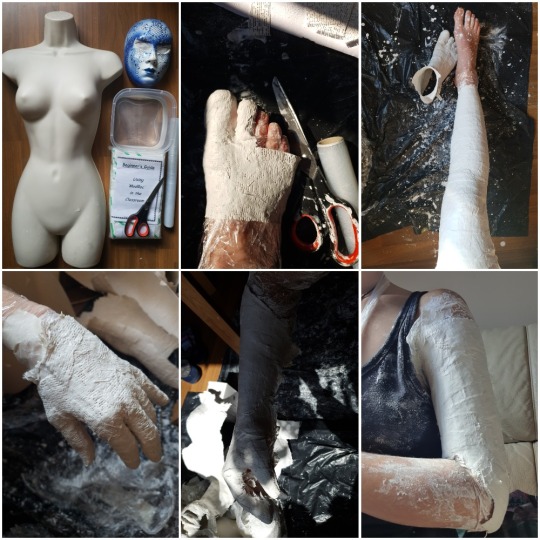
The ModRoc which I ordered from Amazon, I cut into different sized stripes to facilitate the applying process. I prepered a bowl with warm water for soaking the cut bandage pieces after.
Once everyting was set up, I started moulding the mannequin and the plastic mask together trying to get the continuous bust. Missing parts I compensated by casting my own body parts. The whole process was very playfully messy.

When produced parts dried up a little, I noticed that I made some parts too thin. I did not think if I could add more layers after as it was my first try.
In the middle of the process I also realised that I have not have enough materials, so I had to order more. These problems arised due to my lack of experience working on a large scale.
For the further construction I am planning to use a wire or even a hanger that in my theory should serve as a “skeleton” for my figure and keep it more stable, but I am not sure.
4 notes
·
View notes
Text
Reflection
Using mainly natural objects such as clay and sticks, I made a body shaped sculpture as a response to Nagato Iwasaki’s ‘Torso” series, as the use of natural materials always piqued my interest.
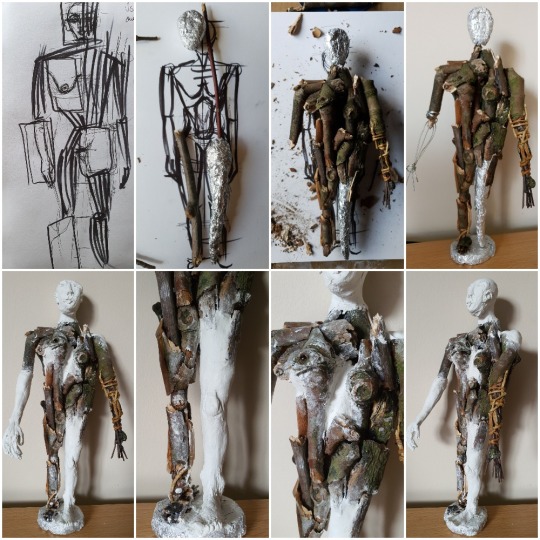
In the beggining, I drew a figure to follow the body proportions during the constructing process. I used super glue to join sticks together. It was not a natural way. It was however, very effective.
Using wire and foil, I pre-made some body parts such as head, a leg and an arm and then covered these with clay. I found this method much easier as it reduces the drying time and keeps the form well.
However, the produced sculpture still looks raw, there is something charming to it too. I quite like its rough forms in contrast to the smooth surface of clay parts.
While I was building this figure, I started thinking about larger scales that I always tried to avoid.
I came up with an idea to make similar life-sized figure, but maybe using ModRoc insted of clay, as clay is much more fragile.
4 notes
·
View notes
Text
The forest spirit
I was very inspired by Ana Mandieta’s series of works where she created female silhouttes in nature using her own body. I decided to make a sculpture as a response to her artwork.
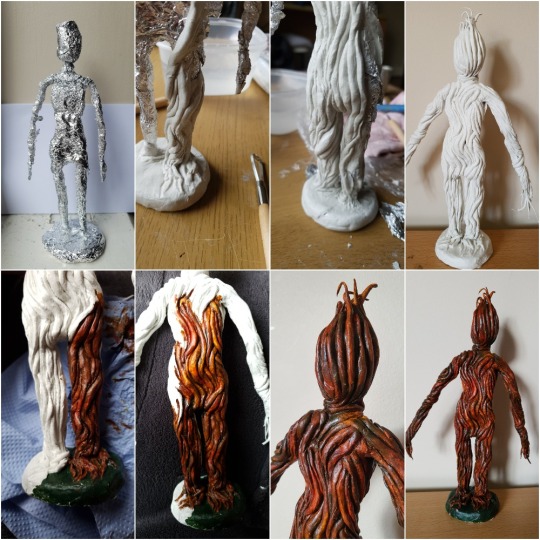
Using wire and foil, I prepared a “skeleton” for my future figure. I used a hummer to compact the foil and make it harder which gave it a more stable posture. Considering the weight of clay, this aspect was very important to think about.
Using tools I cut tiny pieces of clay and shaped them into thin stripes imitating wooden branches and then I covered the body shaped base with them.
Working with air dry clay was a little challenging as it was drying too fast, especially while working with small parts. To make the process go smoothly I had to moisten the whole surface of my sculpture with a paint brush.
I had left the finished sculpture aside to dry for a couple of days. Once it was completely dry, I painted it with mixed primary colours intent on getting a wide range of brown hues. Thus the illusion of a wooden structure came to be.
I really like the outcome.
Thinking about the whole process and its realisation, I can plan the life-sized model using the same technique. To protect clay from fast drying I could use a spray bottle filled with water and prepared sealant gun to sqeeze the clay into a desired diameter. That does not sound too difficult...
2 notes
·
View notes
Photo
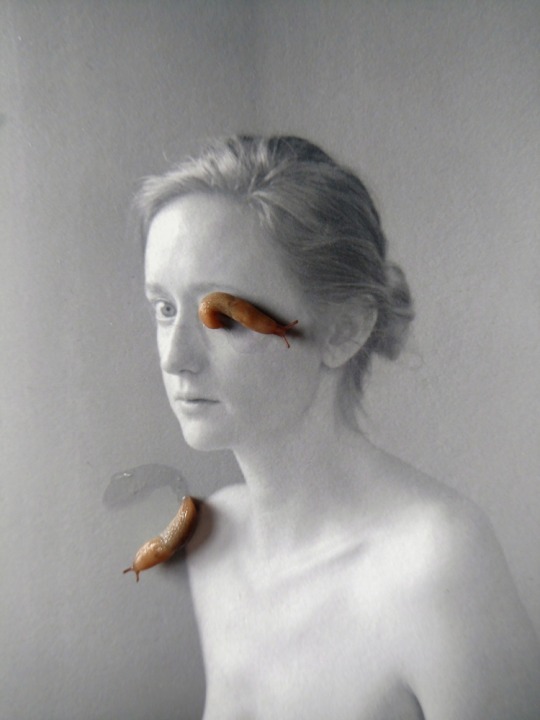


Little Romances, Jordanna Kalman
543 notes
·
View notes
Text
Nagato Iwasaki
Japanese artist.
Using driftwood Iwasaki produced a series of natural lifesized sculptures. He managed to match carefully chosen wooden pieces together creating a human form. Every sculpture has its own gesture and posture that makes them all seem like individuals translating unique personalities.
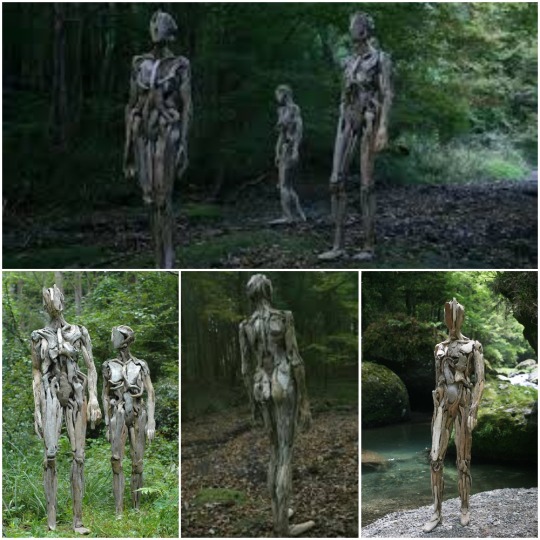
“I create using absolutely no glue or other adhesives. Instead of iron nails I use wooden stakes, so these pieces don't use any materials other than wood in their creation. I also don't bend, shave, or otherwise process the wood in any way. Every piece is built to stand on its own without support.“
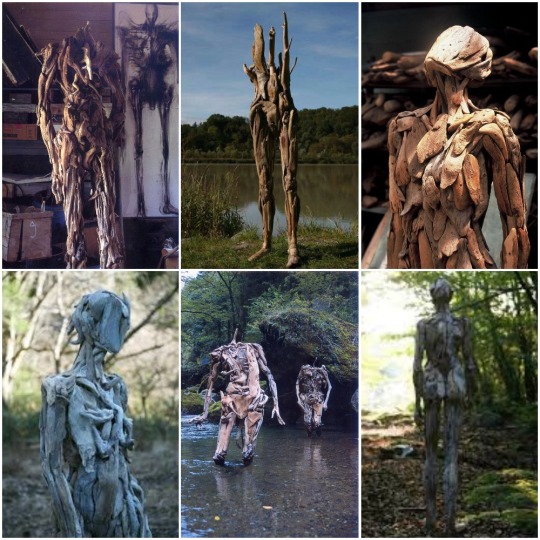
The location of human shaped sculptures and selected materials give a feeling of mystery creatures who seem as though they may be growing or returning to nature.
0 notes
Text
Ana Mandieta Made in nature
A Cuban/American artist.
Mandieta created female silhouettes using natural environment as a canvas for her works. She carved, shaped, engraved and impressed her own body in various outdoor locations which she recorded in photography or film.
“Through my earth/body sculptures, I become one with the earth ... I become an extension of nature and nature becomes an extension of my body."
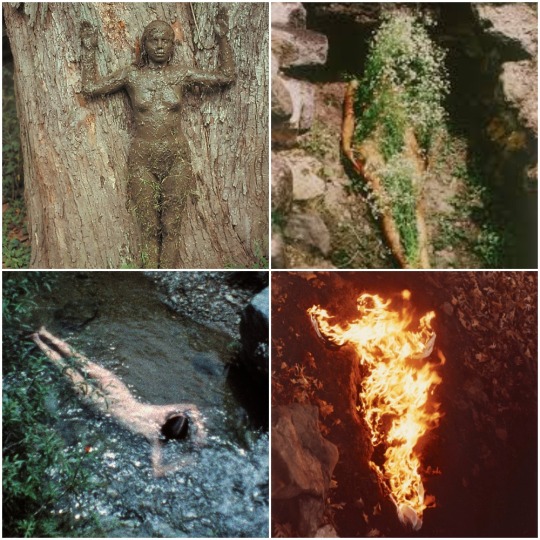
Using natural materials like dirt, water, fire, flowers, rocks, Mandieta provided an unforgettable experience of merging with natural world. Through her work I feel a strong spiritual connection between her body and nature.
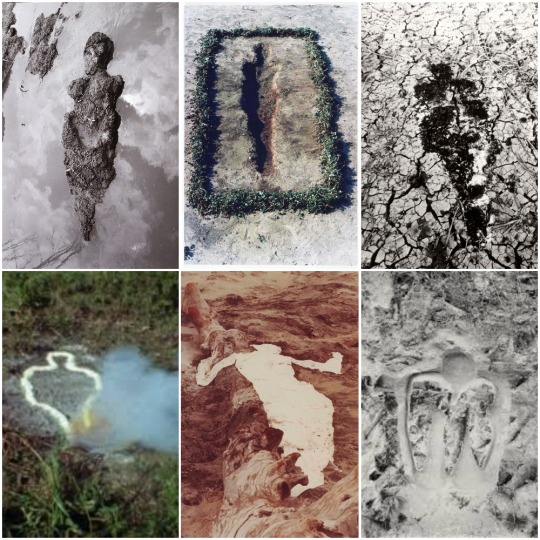
"My art is grounded in the belief of one universal energy which runs through everything: from insect to man, from man to spectre, from spectre to plant from plant to galaxy."
19 notes
·
View notes
Text
Painting with threads
Through this collage I wanted to combine human and nature’s features together. Using acrylic paint on canvas, I made a portrait of myself as a mushroom. It looked really funny but kinda plain, something was missing..
To make my painting look more finished I have decided to make additional mushrooms out of clay.
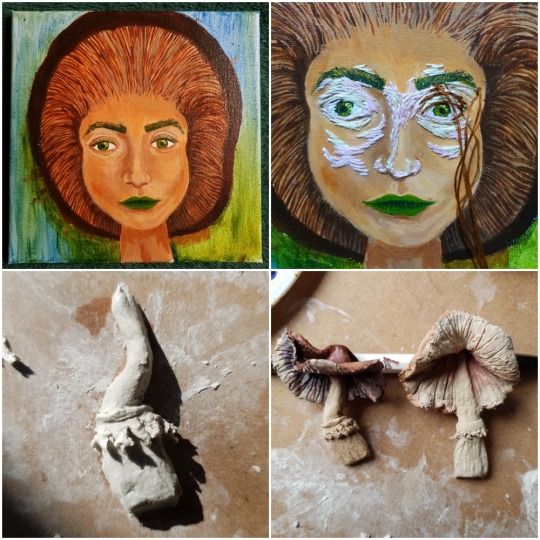
I have elected to embroid eyes and some highlights in a painting to give the subject textured form as well. The frame of canvas became a hoop and kept my embroidery rigid that made it easier to stitch.
During the process I changed my line of action and started adding more colours, trying to define dark and light areas. Using quite limited palette of threads, I tried to blend colours by placing different sized stitches in various directions. For this type of work I broke the embroidery floss up into 3 threads, as it was an optimum thickness to provide a smooth process without laceration of canvas.
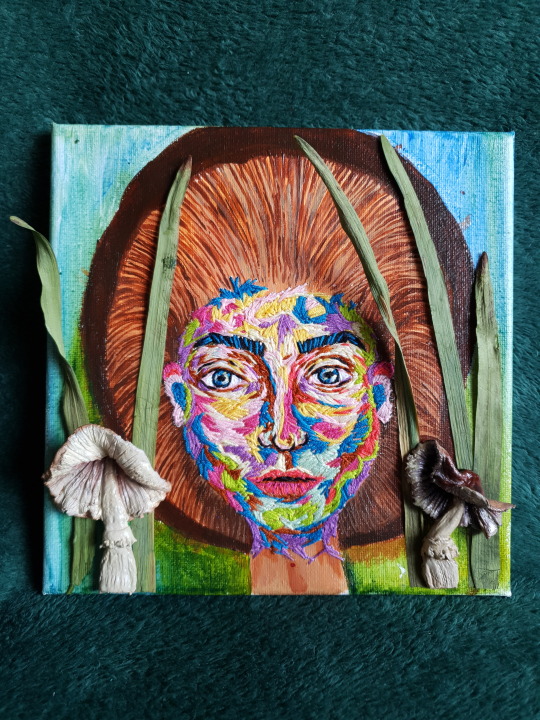
The embroidered face became the center of focus despite the additional elements. However, it does not look too professional, I like its appearance fully though.
It was 85% enjojable and 100% theraupetic. I would definitely try to make something similar but maybe on bigger scale.
3 notes
·
View notes
Text
the conversation..
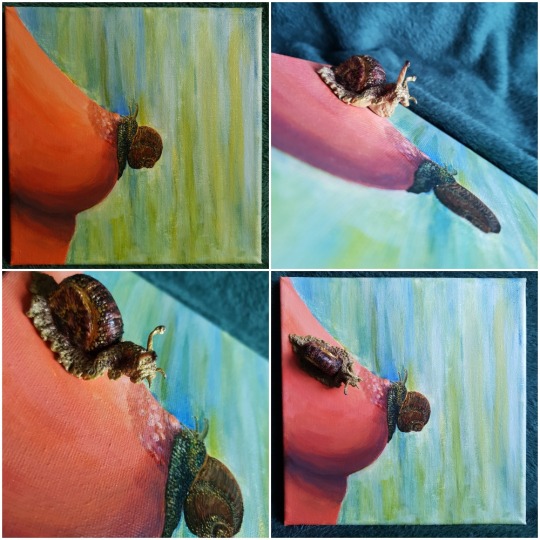
An idea I got while I was surfing on the internet.
In addition to painting, I decided to make another snail out of clay in contrast to the flat image. I qiute like the idea of combinating 3D and 2D forms at once so that I am given more opportunities to define textures.
1 note
·
View note
Text
Cal Redback
French artist, based in Paris.
I really like Redback’s way of showing the human belonging to the surrounding world.Through his series he retouched facial features and organic elements creating a new sureal creature.
Redback managed to create organic and smooth transition from face to wild growth of greenery due to his stunning attention to detail which saved the portraits’s realism.
His produced portraits evoke mixed feelings, from disturbance to astonishment and I really like it.
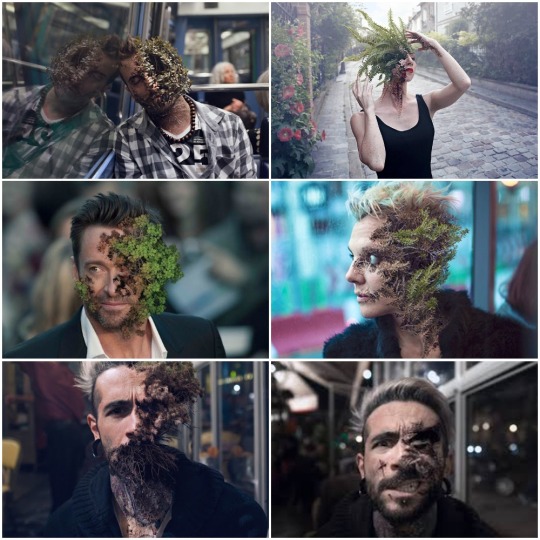
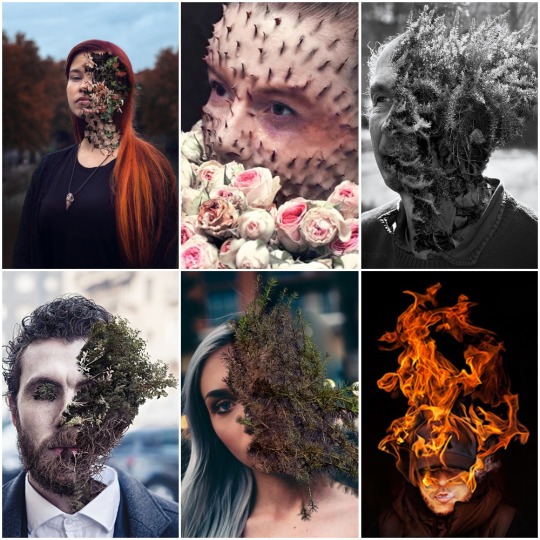
1 note
·
View note
Photo
I really like this photo due to its symbolism. The repeating white colours give the visual power to the image and also bring the figures in front. This image transforms the similiarity between a woman and a flower, the fragility of life clear in both of them.
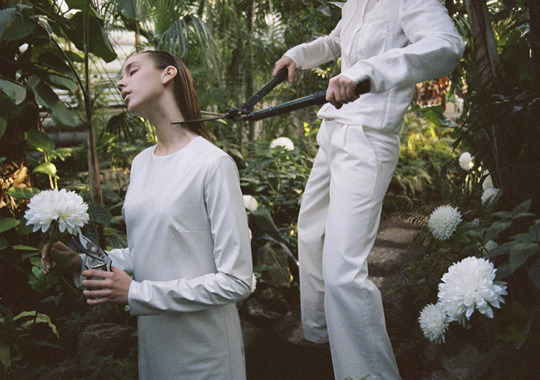
Home & Garden, Michal Pudelka
228 notes
·
View notes
Text
Anthotype
An anthotype process is simalar to cyanotype technique, however involves the use of photosensitive material from plants to create an image instead of chemicals. As in cyanotype, the color remains in the shadowed parts.
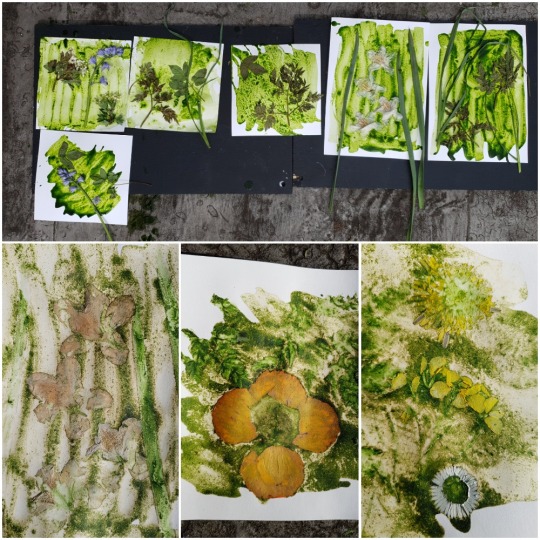
Spinach.
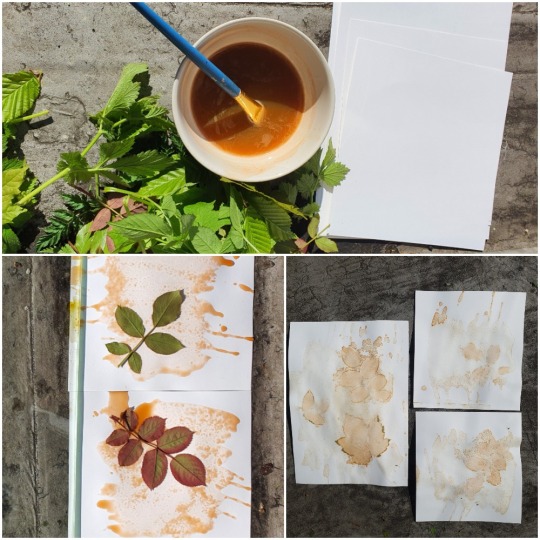
Carrot.

Dandelion.
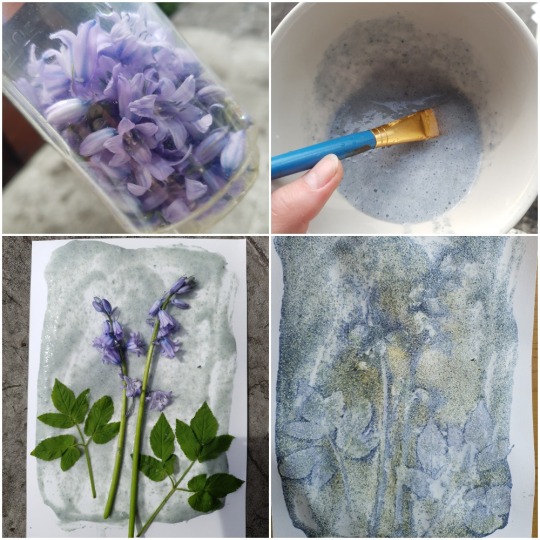
Bluebells.
I really enjoyed the process of making my botanical prints especially the collecting part as it was just like going to the shop. I was walking around the trees, looking for interesting forms of plants and flowers and then placed them into my bag.
In the begging of the process I was quite nervous about the intensity of colour as every plant has different strenght of pigments, but the final appearance of prints beat all my expectations. Every print succeeded in catching not the whole form maybe, but some small elements around that gave some space for imagination.
I blended plants with a small amount of water and then strained them in order to get a photosensitive emulsion to work with. I placed my materials on a still wet coated sheet of paper and then exposed them to direct sunlight. The prints that had thicker layers reattached thin flowers petals and got completelly stuck under the sun which allowed me to create a ghostly forms of flowers.
The produced prints have the specific smell reminding of a freshly mown grass. It gave even more charm to them.
4 notes
·
View notes
Text
The feeling of being watched
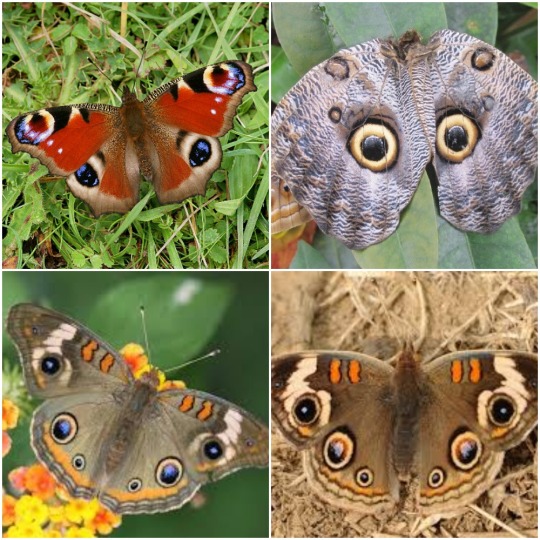

I have used the round elements on the butterfly’s wings as a replacement for real eyes thereby creating an illusion of being watched anyway.
I really like those selected colours since they organically comlement each other. I used a fine liner to add fine details to butterflies making them the center of focus and also resulting in quite a cartoon-drawn style. I like it.
However the facial proportions do not look right, the chin looks too heavy and long, I like the shadows that gave a pleasant view overral.
1 note
·
View note
Text
Antonio Mora

Playing with opacity and composition Antonio Mora, the spanish artist, combines flora and fauna with different portraits to express connection with nature.
Through his extraordinary combinations, Mora has used various elements as replacement for different body parts which became organical extensions.
The navy and faded colours vividly visualise the depth and contrast ih the image and also give a sense of mystery.
His realistic manner of working reminds me of the work of Francesca Woodman by uniting human forms and the surrounding environment.
1 note
·
View note
Text
Third attempt

This time I have decided to build a frame using the paper mache technique to support the materials I was waving with. It was my first experience of working with natural raffia, as I had to throw away my first attempt.
I am very pleased to work with raffia as its structure reminds me of the threads and keep the tension well. I am probably going to use more in my further practice.
During this process I got an idea to make wearable cloth elements using raffia in combination with other natural materials, such as sticks, bark and rope.
2 notes
·
View notes
Text
Photoshoot
I manage to take my model outside and make some photoshoots alone with nature. I quite like the resulting images translating the peaceful atmosphere and harmony. The photo on the branch reminds me a wood fairy from children’s fairy tales. I really want to make a proper photo session somewhere in a forest.
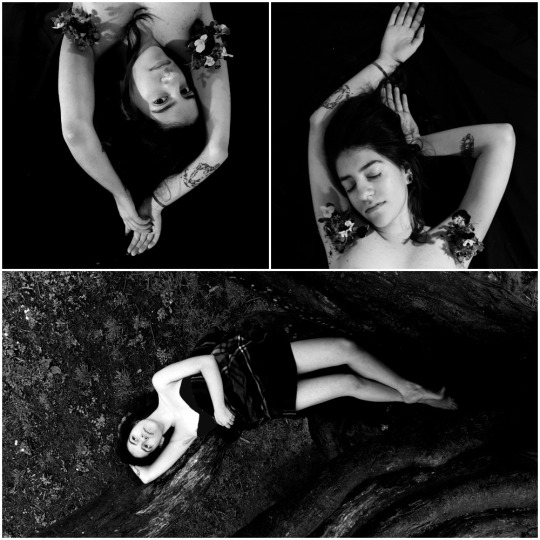
Using green light related to plants stem and red to flower petals , I played around with body shadows. This light allowed me to get a 3D effect and bring the figure to the front.

I really like the resulting gradient of colour( from ice-blue to screaming pink) recieved from playing with cold and hot colours.
The bending position of the models’s body has created a perfect curved line like a skyline, separating the natural and live origin from the cold nothingness.
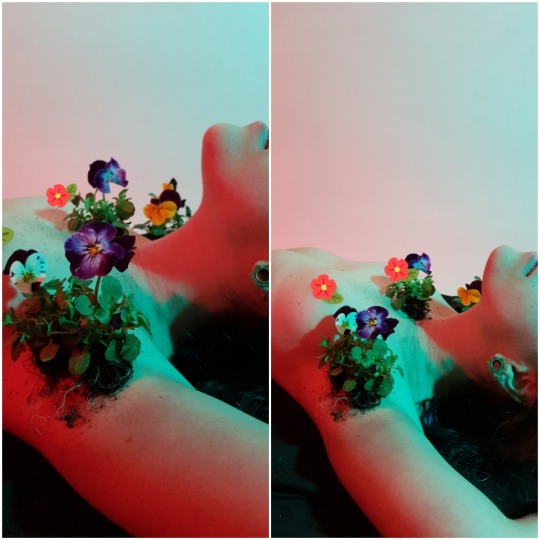
I took some close-ups to catch more details from the plants and skin structure.
Next time I want to bring more models into frame to explore more body lines recreating landscapes.
Continue the idea of live pot.
1 note
·
View note
Photo
I absolutely love the work of Kelly Akashi, as she managed to organically combine two completely different materials together, a solid material like bronze and glass, known for its fragility.
Representing the specific plants in her work, Akashi wanted to capture the passing moment of life.
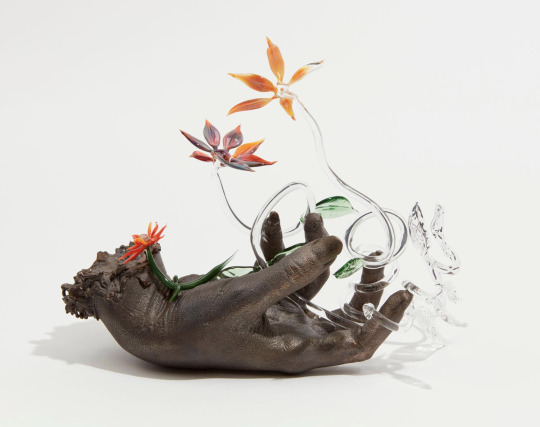
Kelly Akashi, Be Me (Cultivator), 2019. Flameworked borosilicate and stainless steel, 10 x 9 x 4 in Tonya Bonakdar Gallery currently at AAM.
Another of Akashi’s Bronze hand casts is currently in exhibition at the Aspen Art museum, this sculpture the result of her AAM Commons project Cultivator. Akashi presents a larger-than-life-sized bronze cast of her hand overgrown with glass flowers and vines, drawing from the natural landscape she is in conversation with, incorporating plants visible during Aspen’s warmer months.
“As a cast of the artist’s own flesh, the piece captures her hand in motion as if conjuring a natural world into existence. This sculpture affords a macroscopic perspective on her skin creases, cuticles, fingernails, and pores. Recreating two different living forms—flowers and flesh—this work dwells on our human interaction with nature. Cultivator presents the possibility of growth from decay, and joins together materials that are at once delicate and durable. In doing so, Akashi’s sculpture takes on qualities that are at once uncanny, appealing, and familiar.”
18 notes
·
View notes
Text
A Book Making workshop
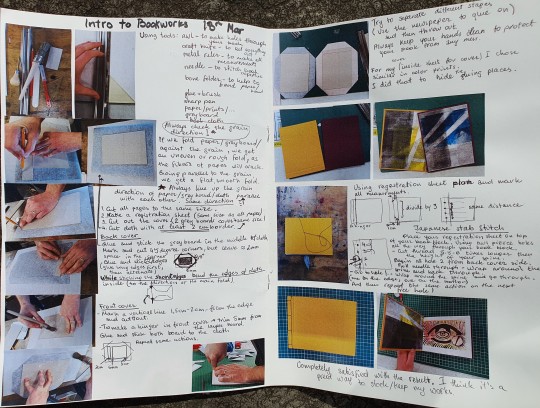
In this session I was shown 2 ways of book binding using the saddle stitch and the japanese stab.
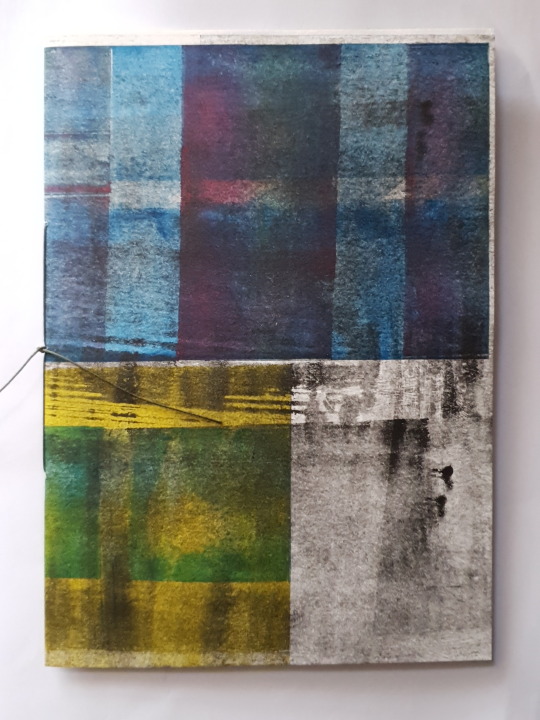
To produce the cover of my future book, I used 2 cloths different in colour but similar in hue to my prints.The pages I have made out of my prints explored different techniques, handmade paper and I also left some empty pages.
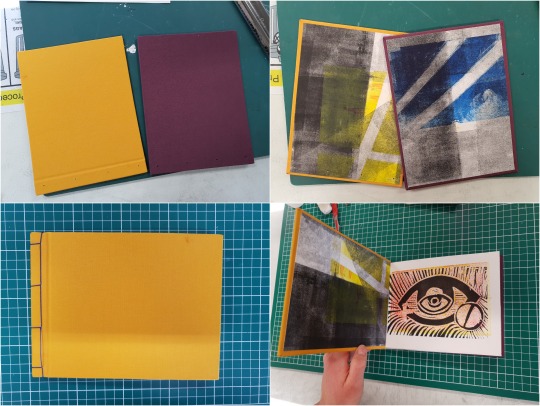
I really enjoyed the process and would like to make more books, maybe with pockets and sleeves, to keep my works together. Also I would love to try other stitching methods.
0 notes